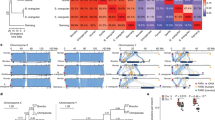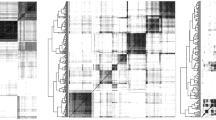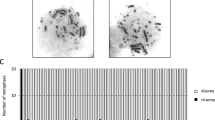Abstract
APART from the data on the chromosome number of chimpanzees1,2 there are no other data available concerning the number and the morphology of the chromosomes of other anthropoids. While engaged on a programme of research on the phylogenetic relationships of primates, I had the opportunity of studying the chromosomes of two orang-utans (male and female, R. 33 and R. 34) in the Zoological Gardens of Rome.
This is a preview of subscription content, access via your institution
Access options
Subscribe to this journal
Receive 51 print issues and online access
$199.00 per year
only $3.90 per issue
Buy this article
- Purchase on SpringerLink
- Instant access to full article PDF
Prices may be subject to local taxes which are calculated during checkout
Similar content being viewed by others
References
Yeager, C. H., Painter, T. S., and Yerkes, R. M., Science, 91, 74 (1940).
Young, W. J., Merz, T., Ferguson-Smith, M., and Johnston, A. W., Science, 131, 1672 (1960).
Chiarelli, B., Nuzzo, F., and De Carli, L., Atti A.G.I., 5, 263 (1960).
Author information
Authors and Affiliations
Rights and permissions
About this article
Cite this article
CHIARELLI, B. Chromosomes of the Orang-Utan (Pongo pygmaeus). Nature 192, 285 (1961). https://doi.org/10.1038/192285a0
Issue date:
DOI: https://doi.org/10.1038/192285a0
This article is cited by
-
Origin of human chromosome 2 revisited
Journal of Genetics (1998)



